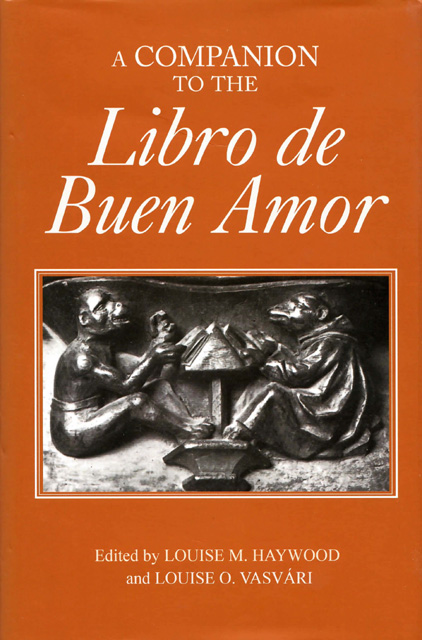Book contents
Metre and Rhythm in the Libro de Buen Amor
Published online by Cambridge University Press: 10 May 2023
Summary
Syllabic irregularity in the ‘Libro de Buen Amor’
Although the Libro de Buen Amor is one of the most widely admired medieval works in verse, modern editors and critics find very little to praise in its versification. This is because they write after almost half a millennium in which the first test of metrical competence in Spanish has been whether lines have the notionally correct number of syllables. Not only do Juan Ruiz’s lines fail this test, they do so by a wider margin than those of most other medieval Spanish poets. Approximately four-fifths of the Libro’s lines are in strophes of cuaderna vía, a form that traditional metrics tells us should be a monorhyme quatrain made up of heptasílabos dobles, or alejandrinos. The verse design of the alejandrino comprises two hemistichs, each with six syllables up to and including the final accent, and each hemistich may be grave or agudo; the first hemistich may also be esdrújulo, ‘paroxytone’. A significant proportion of Juan Ruiz’s cuaderna vía lines, at least as they appear in the surviving mansucripts, are not heptasílabos dobles.
The most common line length is, nevertheless, 6 + 6 syllables, but many lines have this syllable count only if we treat their adjacent vowels in a highly inconsistent manner, as the following examples (from Gybbon-Monypenny 1988) show:
Instance (1) is an example of a line with the mode (that is, the most frequently occurring number) syllable count of 6 + 6 syllables (6F + 6M), but the next two lines are regular only if (2) employs hiatus between ‘se’ and ‘el’, while (3) employs synaloepha (a less likely alternative is that ‘gri-e-go’ in (2) becomes three syllables by diaeresis). Similarly, in (4) ‘e’ + ‘e’ requires synaloepha for regularity, while in (5) it requires hiatus. Thus, although many writers have argued that there were rules governing synaloepha and hiatus in fourteenth-century Castilian verse (for example, Clarke 1947–48: 349 and Orduna 1981: 95n4), these two instances indicate that Juan Ruiz did not always observe them.
If we wish to maximize the number of lines in the Libro de Buen Amor with 6 + 6 syllables, our treatment of adjacent vowels within the same word must also be inconsistent, and must sometimes violate the norms of Castilian speech.
- Type
- Chapter
- Information
- A Companion to the Libro de Buen Amor , pp. 71 - 82Publisher: Boydell & BrewerPrint publication year: 2004

